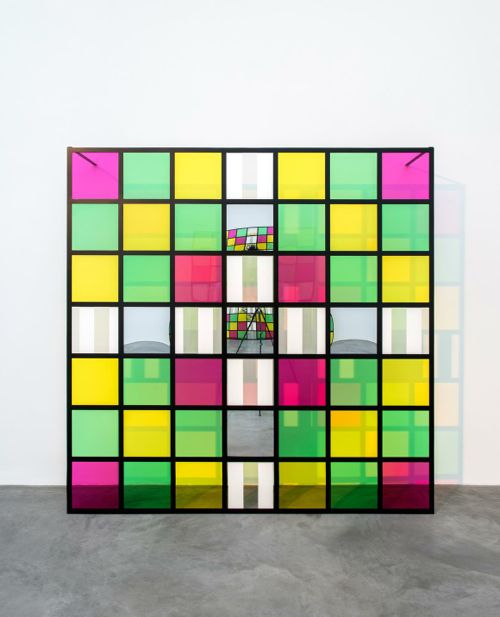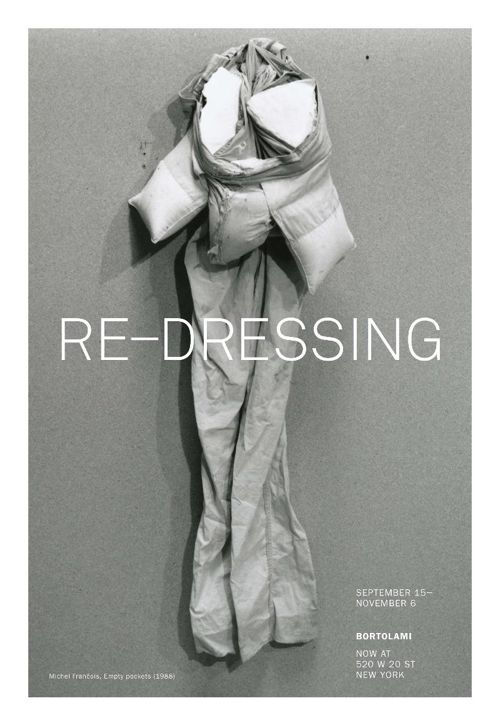
Tag: DANIEL BUREN
Daniel Buren – Travaux inédits
DANIEL BUREN – “EXCENTRIQUE(S)
Daniel Buren – One thing to another, Situated Works
RE-DRESSING
DANIEL BUREN

DANIEL BUREN
To Cut Out: Situated Words 1969-2009
Bortolami announces the opening of Daniel Buren, To Cut Out: Situated Works 1969-2009 on October 30th from 6-8 pm. The exhibition, the artist’s second at the gallery, will remain on view through December 22.
Since the mid-1960s, Daniel Buren has challenged the accepted canon and prescribed experience of art. His 2007 exhibition at Bortolami presented new situated work and the iconic early paintings of 1965-66: stretched woven, striped fabric (linen) – like mattress ticking or a shop awning-on which the artist added white borders or simply painted white in the white lines of the pattern. This work innovated a new direction beyond the ready-made, which had been the dominant expression for the avant-garde. The 2009 exhibition continues the chronological history of his work and shows new iterations of his approach and philosophy.
Buren has coined neologisms that literally redefine art. Understanding this vocabulary helps one to further understand the work, past and present. It includes:
Work in situ– “denotes a work made for a particular site, for a particular time and exhibited in this particular site, and therefore not transportable to another place.” Buren has also identified himself as an artist who “lives and works in situ,” thus implying that his concept goes beyond mere painting and emphasizes art as an experience and as life.
Situated work– “a work for the most part inspired by a particular location, but made with the intention that the very same elements of the original work can be reinstalled in different sites following a series of rules, changing each time in response to the given place. In turn, the site is changed by the work.” This includes his paintings in [x] parts from 1969 to the present, which will be on view in this exhibition.
Cabane éclatée– ‘exploded cabin’: begun in 1975, painting environments that have been “exploded,” turning a would-be two dimensional work into a disparate three-dimensional encounter. These are the ancestors of the colored-Plexi works that have been shown in site-specific installations around the globe over the past 20 years and outside Bortolami in 2007. They are also the predecessors of the Zigzag sculptures: one of his newest series, works made of MDF that add to an ever-expanding catalogue of forms and materials.
Visual tool– the sign of white and color alternating in stripes of exactly 8.7 cm. in width, as derived from the fabric he first used as a canvas in 1965. This functions as a tool in Buren’s work, as a standard or unit of measure of formal properties. Significantly, it is also an intended sign that serves as a constant within the wildly variable parameters and juxtapositions of any and all in situ and situated work since 1965 without exception.
Daniel Buren was born in 1938 in Boulogne-Billancourt, near Paris. His work is currently on view in the following exhibitions: Mapping the Studio, Palazzo Grassi, Francois Pinault Foundation, Venice; Armory’s 20th Anniversary Exhibition, One Colorado Courtyard, Pasadena Armory Center for the Arts, Pasadena, California; Sur le seuil dans la couleur, work in situ, Grand Palais, Paris, France; Modulation, works in situ, Neues Museum, Nuremberg, Germany (opening October 15). A permanent work in situ, Bleus sur Jaune, opened in June 2009, Place de la Justice, Brussels, Belgium. He had survey shows at the Guggenheim, New York (2005) and the Centre Pompidou, Paris (2002). His work is in private and public collections the world over. Buren has exhibited in the Venice Biennale more than 10 times and was awarded the Golden Lion for his French Pavillion in 1986. In 2007, he received the Premium Imperiale for Painting from Japan.



